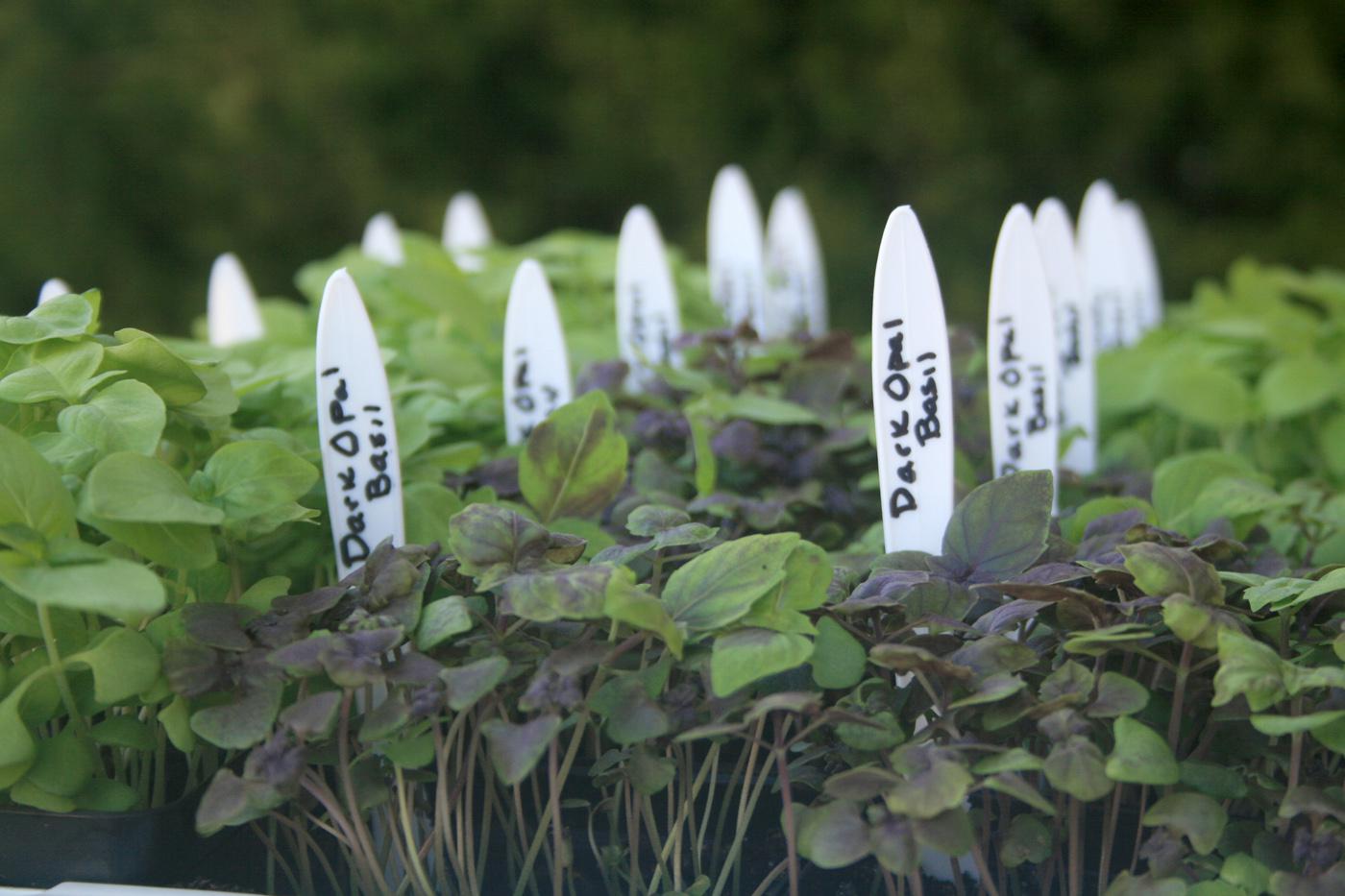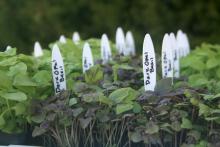Information Possibly Outdated
The information presented on this page was originally released on May 3, 2011. It may not be outdated, but please search our site for more current information. If you plan to quote or reference this information in a publication, please check with the Extension specialist or author before proceeding.
Use recycled materials for unique plant tags
Many gardeners believe they can remember every plant in the garden, and I’ll admit I’ve told myself I could do just that. But even gardeners with great memories will one day say, “Now, what is that plant?”
Plant tags, or garden markers, can be both useful and stylish. They can denote different gardeners or different parts of the garden. They can be plain or fancy. Use your imagination and creativity when creating yours.
A pathway with an occasional decorative plant tag made from terra cotta or hand-painted slate tells the viewer these plants are valued. The markers themselves can act as garden art. But a whole path lined with these fancy plant tags could be overwhelming and might be tacky, not to mention expensive.
Most gardeners want to spend the majority of their garden budget on plants, but if you have a little extra to spend, there are attractive copper and zinc markers available. An herb garden is the perfect place for these artistic tags.
Plant information is etched on them using a pen or special tool so the markings will not wash off. My wife has a set of embossed metal plant tags for her herbs. These will last for many years in the herb garden.
But you don’t have to buy plant tags. Making your own offers the perfect opportunity to reuse items in your home or shed. Most gardeners have a variety of items that are just right for this task.
Plants behind the border simply need a plastic or wooden stake with their names. Rows of carrots and beans can be marked with the seed packet stapled to a wooden stick. Cover the seed packet with a plastic sandwich bag for weather protection. You could have the packets laminated to use them for multiple seasons.
I also like to use old venetian blind slats as tags. Simply cut the slats into 4- to 6-inch pieces. One old set can provide plant tags for many seasons. I have a friend who cuts empty plastic milk and laundry detergent jugs into strips for labels. You could also use disposable plastic utensils for your tags.
I’ve learned a few lessons after years of making my own plant tags. First of all, don’t write plant names with markers. Most markers, even the permanent types, will eventually bleach out in the sun. Instead, I use a pencil with soft lead.
Second of all, don’t use popsicle sticks or craft sticks. These wooden sticks are a popular choice for plant tags, especially with children. However, the wood usually blackens from mold growth and becomes unreadable. This happened to me last year when I was growing tomato transplants. When it was planting time, I had no idea which variety was which.
Be creative and find out what works best in your garden. And whether you use inexpensive, recycled or fancy to tags to identify plants, all the markers are saying, “That’s my garden.”










